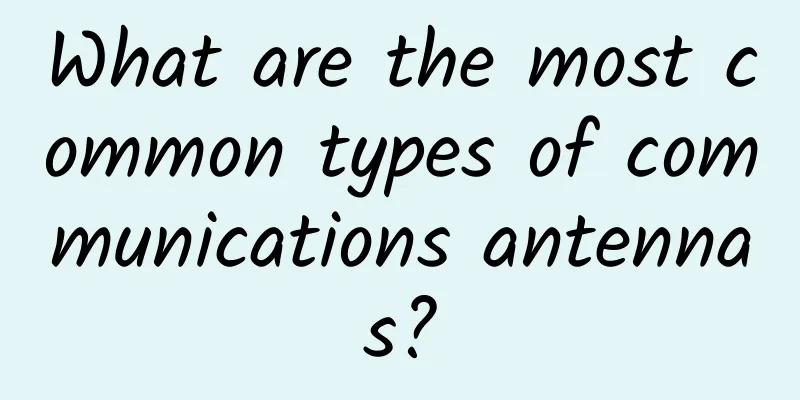Don't let hackers sneak into your network: In-depth analysis of DHCP Snooping

1. Overview of DHCP Working PrincipleBefore learning DHCP Snooping, we need to review the working principle of DHCP. The following analyzes the working principle of DHCP from two scenarios 1. DHCP without relayDHCP without relay agent (1) Discovery phase The DHCP client requests services from the DHCP server in the LAN by broadcasting a DHCP Discover message. (2) Provision phase The DHCP server responds to the client through a DHCP Offer message based on the IP address pool, corresponding subnet mask, gateway and other information configured by itself. (3) Request phase If the configuration in the DHCP Offer message is accepted, the DHCP client broadcasts a DHCP Request message to inform the DHCP server and other hosts in the LAN of its effective IP address. () Confirmation stage After receiving the DHCP ACK message, the DHCP client will broadcast a free ARP message to detect whether there are other terminals in the network segment using the IP address assigned by the server. 2. DHCP relay scenarioDHCP relay scenario (1) Discovery phase After receiving the DHCP DISCOVER message broadcast by the DHCP client, the DHCP relay agent performs the following processing:
(2) Provision phase After receiving the DHCP DISCOVER message, the DHCP server selects an address pool with the same network segment as the giaddr field in the message, allocates an IP address and other parameters to the client, and then unicasts a DHCP OFFER message to the DHCP relay agent identified by the giaddr field. After receiving the DHCP OFFER message, the DHCP relay agent performs the following processing:
(3) Request phase The process of processing the DHCP REQUEST message received by the relay from the client is the same as the "discovery phase". (4) Confirmation stage The process of the relay receiving the DHCP ACK message from the server is the same as the "providing phase". II. DHCP Snooping OverviewTo ensure the security of network communication services, DHCP Snooping technology is introduced to establish a firewall between DHCP Client and DHCP Server to resist various attacks against DHCP in the network. DHCP Snooping is a security feature of DHCP that ensures that DHCP clients obtain IP addresses from legitimate DHCP servers. The DHCP server records the correspondence between the DHCP client's IP address and MAC address and other parameters to prevent attacks against DHCP on the network. Currently, the DHCP protocol encounters many security issues during its application. There are some attacks against DHCP in the network, such as DHCP Server impersonator attacks, DHCP Server denial of service attacks, and spoofed DHCP message attacks. DHCP Snooping mainly implements DHCP network security through the DHCP Snooping trust function and the DHCP Snooping binding table. DHCP Snooping Trust FunctionThe trust function of DHCP Snooping can ensure that the client obtains an IP (Internet Protocol) address from a legitimate server. As shown in the figure below, if there is a DHCP server impersonator set up privately in the network, the DHCP client may obtain the wrong IP address and network configuration parameters and fail to communicate normally. The DHCP Snooping trust function can control the source of the DHCP server response message to prevent the DHCP server impersonator that may exist in the network from assigning IP addresses and other configuration information to the DHCP client. DHCP Snooping Trust Function Diagram The DHCP Snooping trust function divides interfaces into trusted interfaces and untrusted interfaces:
3. DHCP Snooping Binding TableDHCP Snooping Binding Table Functional Diagram After the DHCP Snooping function is enabled on the Layer 2 access device, it extracts key information (including the PC's MAC address, the obtained IP address, and the address lease) from the received DHCP ACK message, and obtains information about the DHCP Snooping-enabled interface connected to the PC (including the interface number and the VLAN to which the interface belongs). Based on this information, it generates a DHCP Snooping binding table. Since the DHCP Snooping binding table records the correspondence between DHCP client IP addresses and MAC addresses and other parameters, by matching the message with the DHCP Snooping binding table, it can effectively prevent attacks from illegal users. The DHCP Snooping binding table ages according to the DHCP lease period or automatically deletes the corresponding entry according to the DHCP Release message sent by the user when releasing the IP address. IV. Function of DHCP SnoopingDHCP snooping is used to prevent:
DHCP Snooping provides different working modes according to different attack types, as shown in the following table: 1. DHCP Server Impersonator Attack(1) Attack Principle: Since the DHCP request message is sent in broadcast form, the DHCP server impersonator can intercept this message. The DHCP server impersonator responds to the DHCP client with spoofed information, such as wrong gateway address, wrong DNS server, wrong IP, etc., to achieve the purpose of DoS (Deny of Service). (2) Solution:
2. DoS attack by changing CHADDR value(1) Attack Principle: The attacker continuously applies for a large number of IP addresses from the DHCP server until the IP addresses in the DHCP server's address pool are exhausted, causing the DHCP server to be unable to allocate IP addresses to normal users. (2) Solution: To prevent attacks by attackers who change the CHADDR value, you can configure the DHCP Snooping function on the device to check the CHADDR field in the DHCP Request message. If the field matches the source MAC in the data frame header, the message is forwarded; otherwise, the message is discarded. This ensures that legitimate users can use network services normally. 3. DHCP Man-in-the-Middle Attack(1) Attack Principle: The attacker uses the ARP mechanism to let the client learn the mapping relationship between the DHCP server IP and the attacker MAC, and let the server learn the mapping relationship between the client IP and the attacker Mac. In this way, all IP packets exchanged between the client and the server will be forwarded by the attacker. In essence, the man-in-the-middle attack is a spoofing IP/MAC attack. The man-in-the-middle uses the mapping relationship between the false IP address and the MAC address to deceive the DHCP client and server at the same time. (2) Solution: To defend against man-in-the-middle attacks and IP/MAC Spoofing attacks, you can use the binding table working mode of DHCP Snooping. When the interface receives an ARP or IP message, use the "source IP + source MAC" in the ARP or IP message to match the DHCP Snooping binding table. If it matches, it will be forwarded, otherwise it will be discarded. V. Introduction to DHCP Snooping Configuration Commands(1) Enable DHCP Snooping globally: (2) Enable DHCP snooping in VLAN view: When this command is executed in VLAN view, the command function takes effect on DHCP messages belonging to the VLAN received by all interfaces of the device. (3) Configure the interface to be in the "trust" state in the VLAN view\ If this command is executed in VLAN view, it takes effect only on DHCP messages belonging to this VLAN and received by the interface added to the VLAN. (4) Enable DHCP snooping in interface view (5) Configure the interface to be in the "trusted" state in the interface view By default, the device interface is in untrusted state. (6) (Optional) Configuring DHCP messages with non-zero GIADDR fields to be discarded Enables the function of detecting whether the GIADDR field in the DHCP Request message is non-zero. This command can be configured in VLAN view or interface view. If this command is executed in VLAN view, the command function will take effect on the DHCP messages belonging to the VLAN received by all interfaces of the device; if this command is executed in interface view, the command function will take effect on all DHCP messages under the interface. DHCP Snooping Configuration ExampleAs shown in the figure, the basic configurations of DHCP and VLAN have been completed. Configure the DHCP snooping function on the Switch. (1) Configuration method 1: Interface view (2) Configuration method 2: VLAN view Configuration verification Run the display dhcp snooping interface command to check the DHCP Snooping running information on the interface. |
<<: How wireless mesh networking technology can power smart buildings
>>: The core network and its vital role in cellular connectivity
Recommend
A complete manual for troubleshooting network problems. You will never be afraid of problems again after reading this.
[[257179]] 1. Network complexity General network ...
Huawei's cloud computing efforts drive urban cloud computing industry upgrades
[51CTO.com original article] Entering 2017, the r...
RAKsmart: Japan/Korea independent server replenishment, large bandwidth, unlimited traffic, CN2+BGP line
At the beginning of the month, I shared RAKsmart&...
HostKvm New Year Offer: Hong Kong Cloud 4G Memory Package Annual Payment Discount Only $60/Year
HostKvm is a foreign VPS service provider founded...
New infrastructure: Should we pursue this biggest “trend” in 2020?
If you want to find a keyword that can dominate t...
After the construction of 5G, 4G Internet access on mobile phones has become slower. Is this really a marketing trick of the operators?
Preface [[332244]] Recently, many customers and f...
The core technical principles behind DingTalk document collaborative editing
Some people say that the most profound change tha...
The data is not real-time enough: try long connection?
background In certain scenarios, we often need to...
DediPath New Year Promotion: $15/year KVM-1GB/10GB/1Gbps unlimited traffic/Los Angeles data center
As the Chinese New Year is approaching, DediPath ...
Yecao Cloud: Hong Kong independent server starting from 199 yuan/month, optional BGP/CTGNet/Huawei Cloud line
The blog has shared Yecaoyun product information ...
From "4G+5G" to "5G+5G": Dual SIM dual standby evolves quickly
Driven by market demand and the country's &qu...
Byte One: The website cannot be displayed, how to troubleshoot?
Hello everyone, I am Xiaolin. A reader was asked ...
Dish signs 10-year AT&T network service deal worth $5 billion
US satellite TV operator Dish Network has signed ...
What will Beijing Supply and Marketing Big Data Group do after obtaining the CDN license?
[51CTO.com original article] 2017 is a critical y...
iWebFusion: $99/month - Dual E5-2670/128G memory/500G SSD hard drive/20TB monthly traffic, multiple data centers in Los Angeles and other places
iWebFusion (iWFHosting) is a site under the forei...









